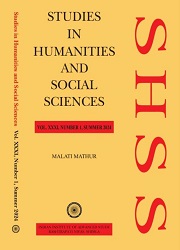The Satyagraha of Mahatma Gandhi
Structural Parallels with the Vrata Tradition
Keywords:
Dialogue, Satyagraha, Homology, Truth, VrataAbstract
The concept of truth had a deep and abiding meaning for Mahatma Gandhi. This meaning became clear to him in the course of political action and not merely as a consequence of philosophical reflection. Truth is not to be renounced even in face of death. Such is the value ascribed to truth in Gandhi’s vision. The quest for truth was central to Gandhi’s life but his was not a kind of truth that could be ascertained through critical scholarship. For Gandhi, verification depended on deliberate action controlled by a vow. According to him, ‘truth is the essence of the vow’ and this dictum took the form of the Satyagraha. For Mahatma Gandhi, Satyagraha is closely bound with his conception of the truth and is deeply embedded in the Jaina and Hindu traditions. This article attempts a structural analysis of Satyagraha engaging with one subjective meaning of Satyagraha — that of Mahatma Gandhi’s, and tries to locate a structural parallel between Hindu Vrata and Satyagraha. Satyagraha here is sought to be understood not as a historical category, rather as a text in itself. With the famous Hindu Vrata of Savitri as a case in point, I have attempted to decompose Satyagraha into its structural constituents and uncover the homology that Satyagraha shares with Vrata.Downloads
Downloads
Published
2022-03-21
How to Cite
Suryanarayan, S. . (2022). The Satyagraha of Mahatma Gandhi: Structural Parallels with the Vrata Tradition. Studies in Humanities and Social Sciences (SH&Amp;SS), 26(2), 145–163. Retrieved from http://14.139.58.200/ojs/index.php/shss/article/view/1353
Issue
Section
Articles



